A punching cradle is a useful tool to have around in one’s bindery. There are a lot of models available for purchase, but it’s quite simple to make one yourself using just a few tools and materials. I have a few in my bindery that range in size, but I find my collapsible punching cradle to be the most useful. Especially when I am traveling to teach workshops.
The following tutorial will go through the steps to create your own collapsible punching cradle. I’ve including all of my measurements, but the best part about this tool is that you can customize it for your own purposes. This particular cradle will consist of a detachable cradle and 2 leg supports. The cradle will have two different size options, which makes this particular version even more versatile. I discovered this collapsible punching cradle while taking a private workshop with Monique Lallier. She allowed me to take down the measurements and I made my own once I returned to my studio.
If you are looking for more instructional content, I have a growing list of tutorials and I also teach live workshops in-person and online. Check out my list of Upcoming Workshops.
MATERIALS:
– paper for covering (I used Lokta)
– binder’s board
– book cloth
– PVA
– methyl cellulose (optional)
TOOLS:
– pencil
– ruler
– 90º triangle
– Japanese screw punch with 3mm bit
– cutting mat
– x-acto blade
– glue brushes in various sizes
– bone folder
– scissors
STEP ONE:
Determine the length of workable space for your cradle. For example, if you tend to work large, then perhaps you want to make a cradle long enough for paper that is 12″ tall. The cradle I’m making in this tutorial is slightly longer than ones I currently have. The total width of my cradle is 395mm (~15½”), the two outer slots give me a workable area of 325mm (~12½”) and the inter slots give me a workable area of 288mm (~11¼”).
Once you’ve decided on your dimensions, grab some binder’s board and cut down 2 pieces the same size for the cradle. The dimensions for the legs and support stubs can really vary depending on the distance you want between the bottom of the cradle and your work surface. The lower the cradle is the more likely that your awl will pierce your work surface if left unprotected. But you can start by using my measurements below and then make your own modifications.
MY MEASUREMENTS:
cradle (cut 2 pieces the same size):
395mm x 125mm
legs (cut 2 pieces the same size):
150mmx 88mm
support stubs (cut 4 pieces the same size):
110mm x 11mm
STEP TWO:
Mark with a pencil where you would like the two slots to be on both cradle pieces. On my cradle the outer slot starts 30mm in from either end. Each slot is 3mm wide and they sit 15mm apart.
The height of my slots are 80mm from the bottom edge of the cradle. Using a 90º triangle, draw a line from your mark up to the desired height. Do this on either side and on both cradle pieces.
Using a Japanese screw punch with a 3mm bit, punch a hole at the top of the slots. Make sure to have a scrap board underneath to protect your work surface. With an x-acto blade, carefully cut out the slots by slowly cutting through each layer. DO NOT try and cut through the entire thickness in one stroke, the blade could kickback and slice your finger. As you cut, angle your blade as perpendicular to the binder’s board as you can, this will make a nice straight cut. Sand the slots smooth.
STEP THREE:
Cut down the covering material to include excess for turn-ins on all four sides. My paper pieces came out to 435mm x 165mm. Glue up the paper with PVA and attach.
Cut off the corners leaving a board and half thickness between the board corner and the cut. With an x-acto blade cut down the center of the slots, from the top of the slot to the edge of the paper. Apply more PVA and fold downward into the slots with a bone folder. Use the bone folder to manipulate the paper around the curve of the slot. Continue by gluing down the remaining turn-ins.
Butt up both cradle pieces, aligning the slots. Place two weights on either side. The height of the cloth hinge will be slightly shorter than the distance between the inside of the outer slots. For my cradle this distance is 325mm, so the height of my cloth will be 323mm with a width of 80mm. (The width does not need to cover the full length of the slots, just a comfortable amount across both cradle pieces). Glue up the cloth hinge and put in place. Apply some pressure with a bone folder. Fold and place weights along the hinge. Wait until dry before continuing on.
STEP FOUR:
Cut away the cloth covering the slots.
Measure the overall size of the open cradle and cut down the lining from the same paper stock. The measurement for my lining is 383mm x 247mm. Glue up the lining and place it over both cradle pieces. Since this is such a large piece, you may want to add some methyl cellulose to your PVA. Methyl cellulose will slow down the drying time of the PVA, giving you more time to glue up and place down. Allow the cradle to dry open under a board and a few weights.
Once the cradle is dry, use an x-acto blade to make a cut down the center of the slot (from end to end). Apply some PVA and fold over the paper onto the sides of the slots. This is just the same as step three.
STEP FIVE:
The cradle portion is complete and now it’s time to construct the legs. It’s really important that the support stubs are cut square because they will be glued to the legs in a ‘V’ shape to create a 90º angle. So here’s the quickest way to mark the legs for the support stubs. Grab a 90º triangle, center it on one of the legs and trace (see image below).
Tape the triangle down to the leg along the pencil marks. Put tape on the free side and sandwich the triangle with the other leg. Remove the leg that is already marked, now you can mark the other leg at the same spot.
If you’ve been following my measurements the support stubs will be oversized along the length. Glue down the support stubs with PVA on the inside of the pencil mark (see image below). Put in a nipping press or place a small weight on top and allow to dry. Trim off the overhang by hand or with a cutter.
STEP SIX:
To cover the legs, add ample room for turn-ins and cut down 2 pieces of paper from the same stock. My measurements are 200mm x 140mm.
I like to use Lokta for this project because it becomes very malleable when you apply PVA to it, which allows me to easily sculpt it around the support stubs. If you have access to a press and some foam, this part will be extra easy. Glue up the paper and place it on the leg (stub side), place it on some wax paper then cover with foam. Put this between two press boards and nip it. Remove from the press, cut corners and glue down turn-ins. Repeat for the other leg.
If you don’t have a press, it’s still easy, you’ll just have to work the paper along the sides with your bone folder. To do this without getting frustrated or tearing the paper, apply pressure to the top of the support stubs, then work the paper down the sides and finally flatten the paper onto the leg. Cut the corners off and glue down the turn-ins. Repeat for the other leg.
STEP SEVEN:
Cut down 2 pieces to line the other side of the leg to cover up the turn-ins. This will be slightly smaller than the dimensions of the leg. My measurements are 146mm x 85mm. Glue down the lining with PVA. Allow all three pieces to dry before assembling and using.
Congrats, you made it to the end and now you have unique and useful punching cradle to aid in your future bookbinding projects.
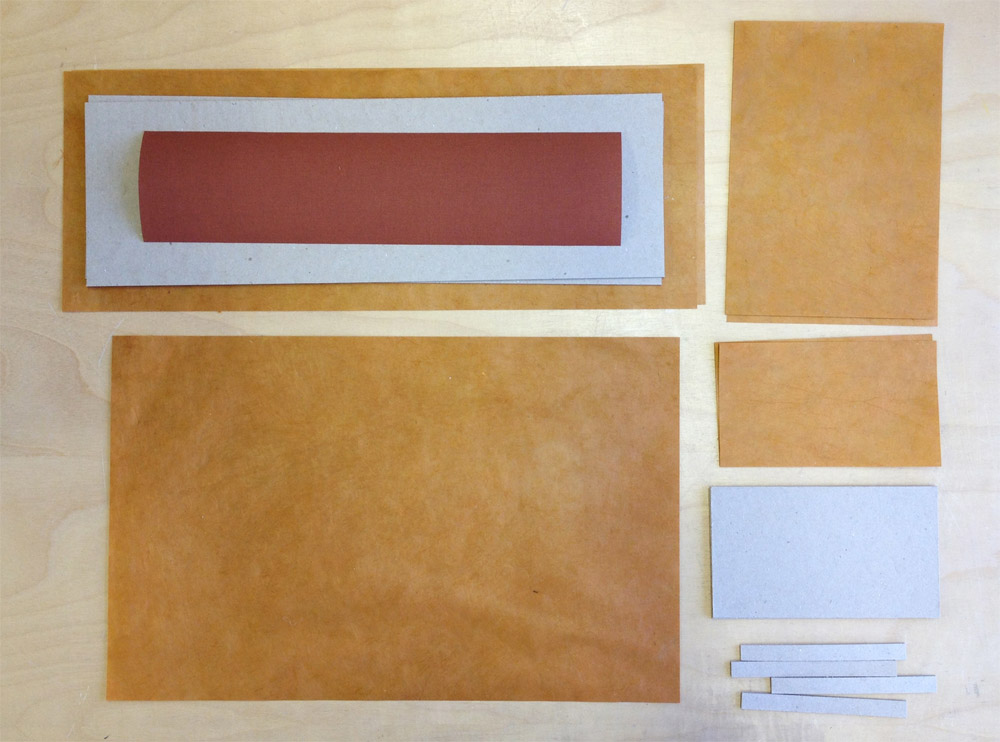
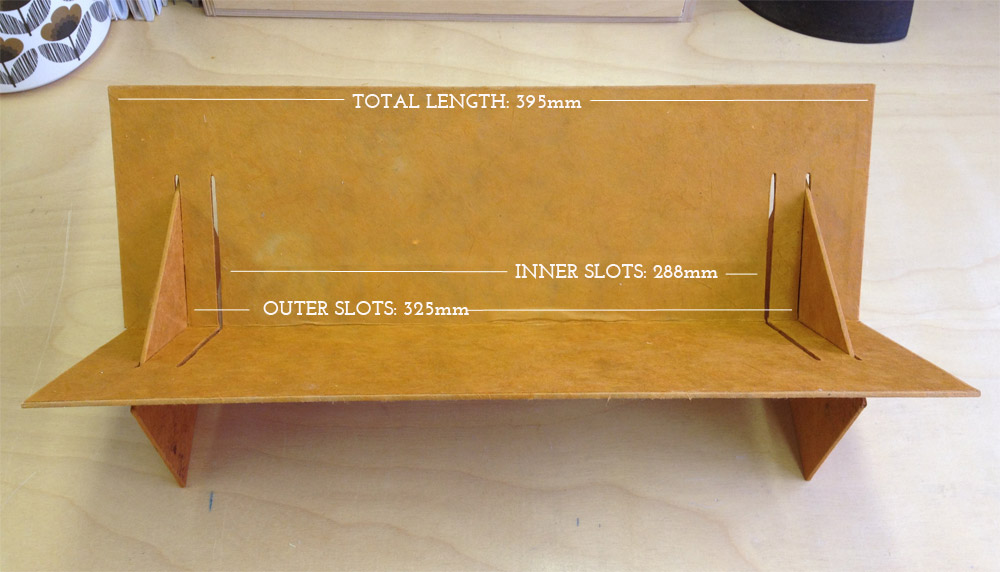
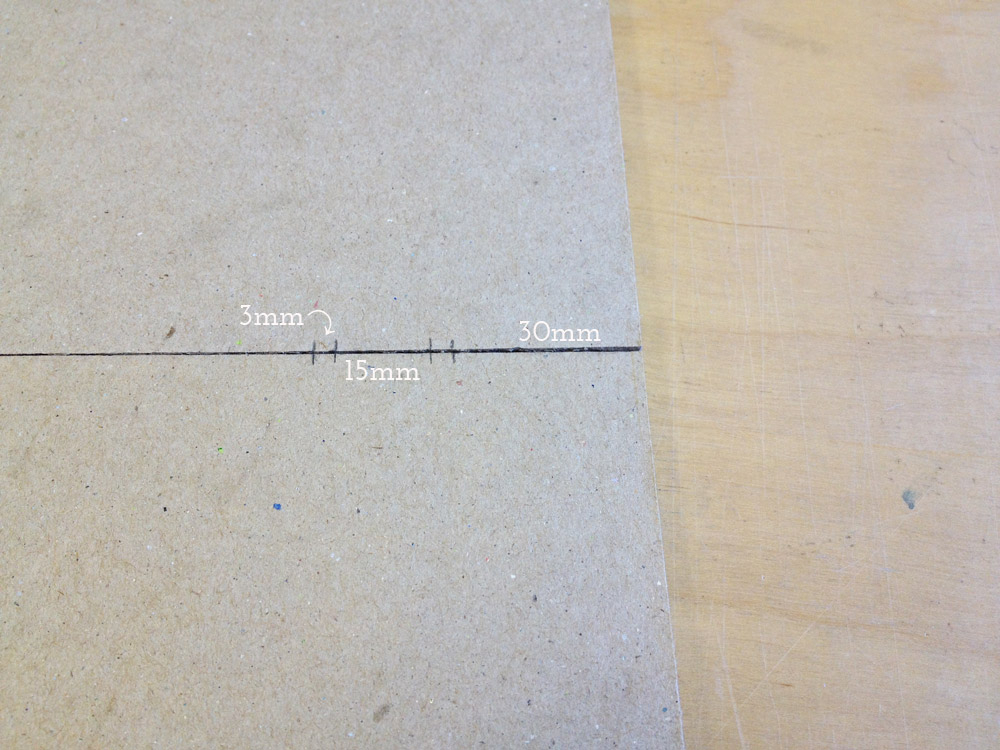
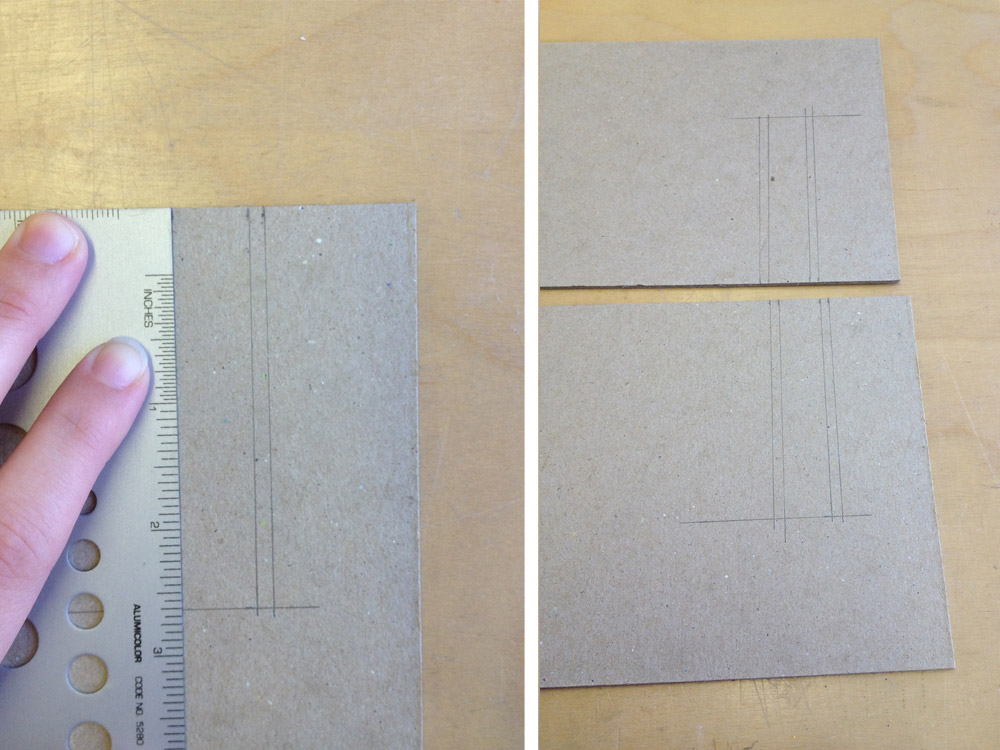
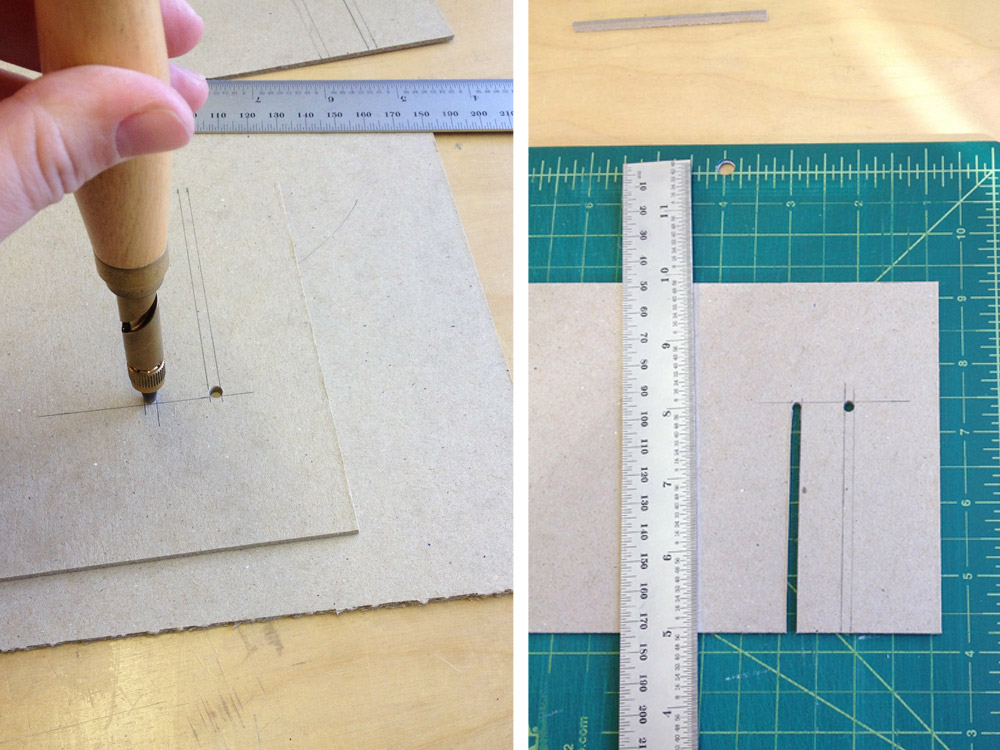
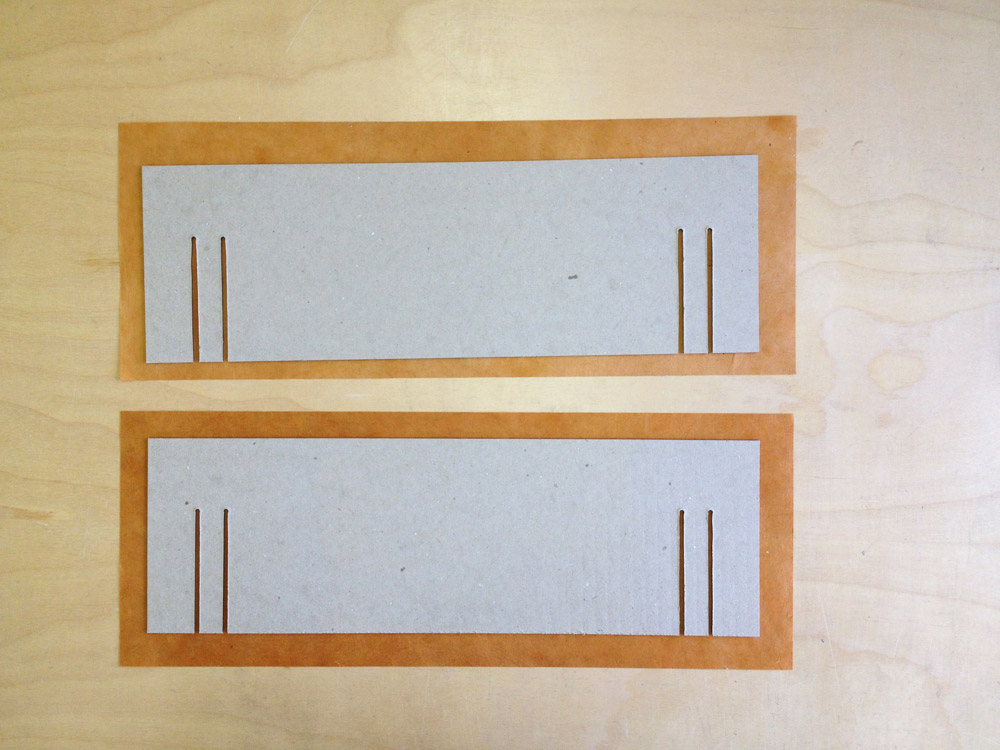
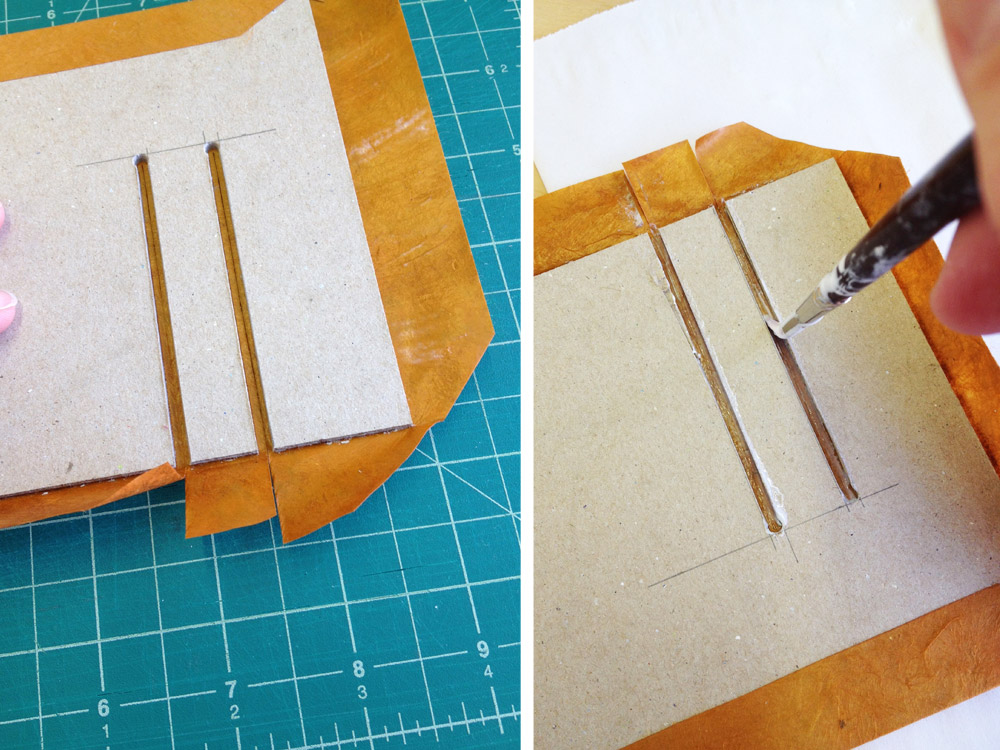
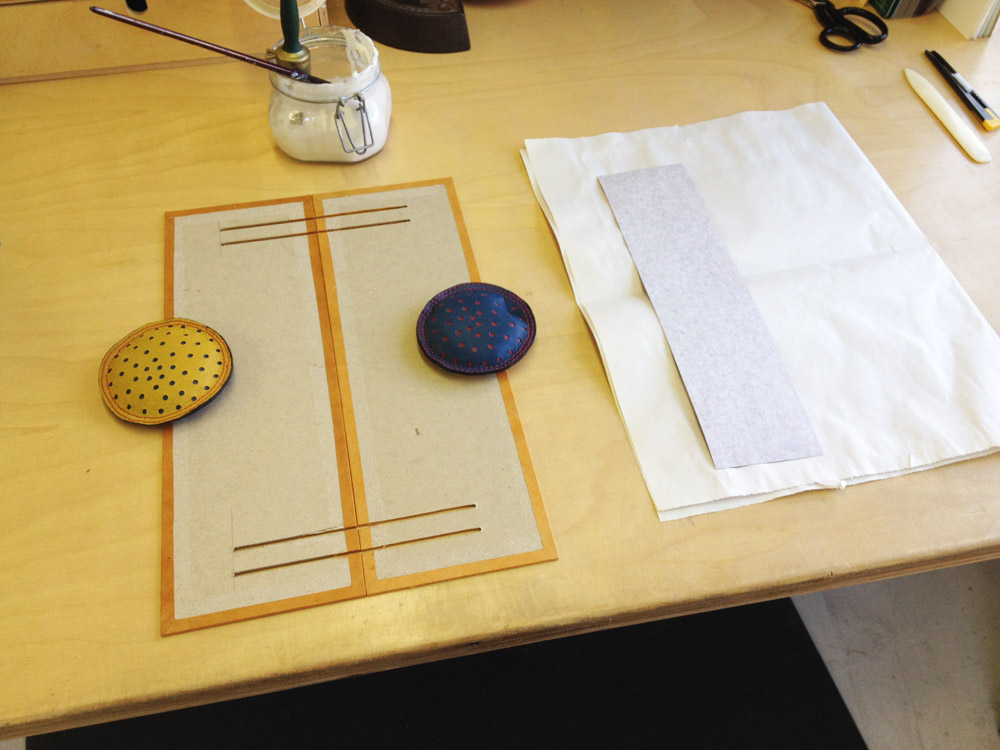
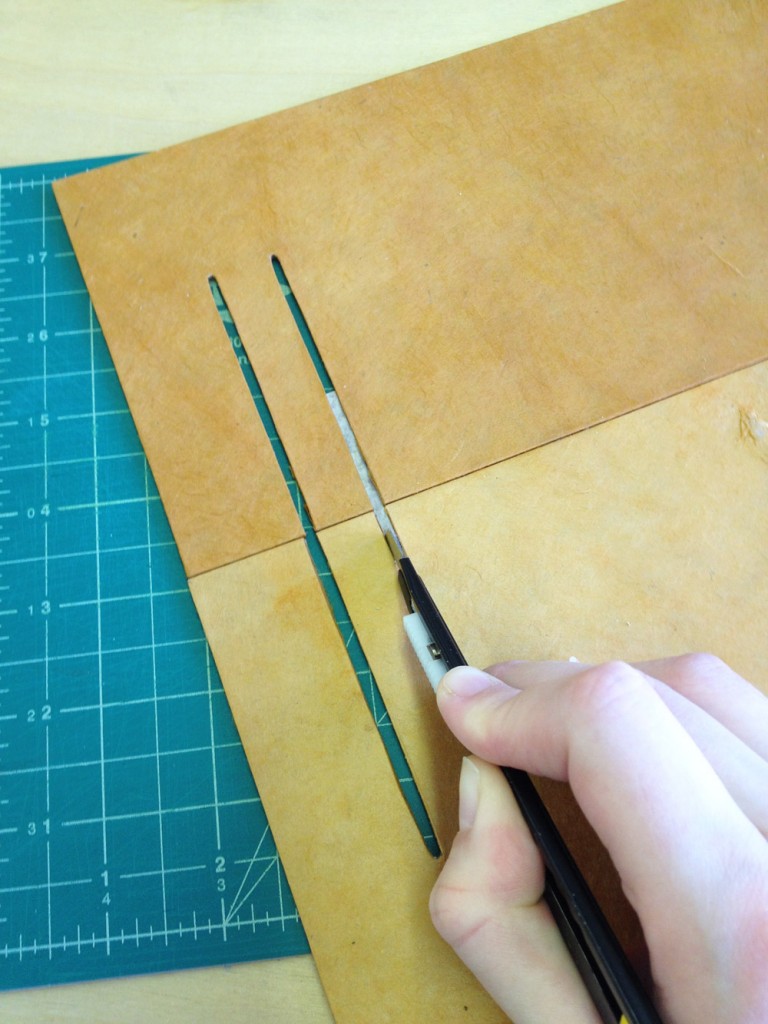
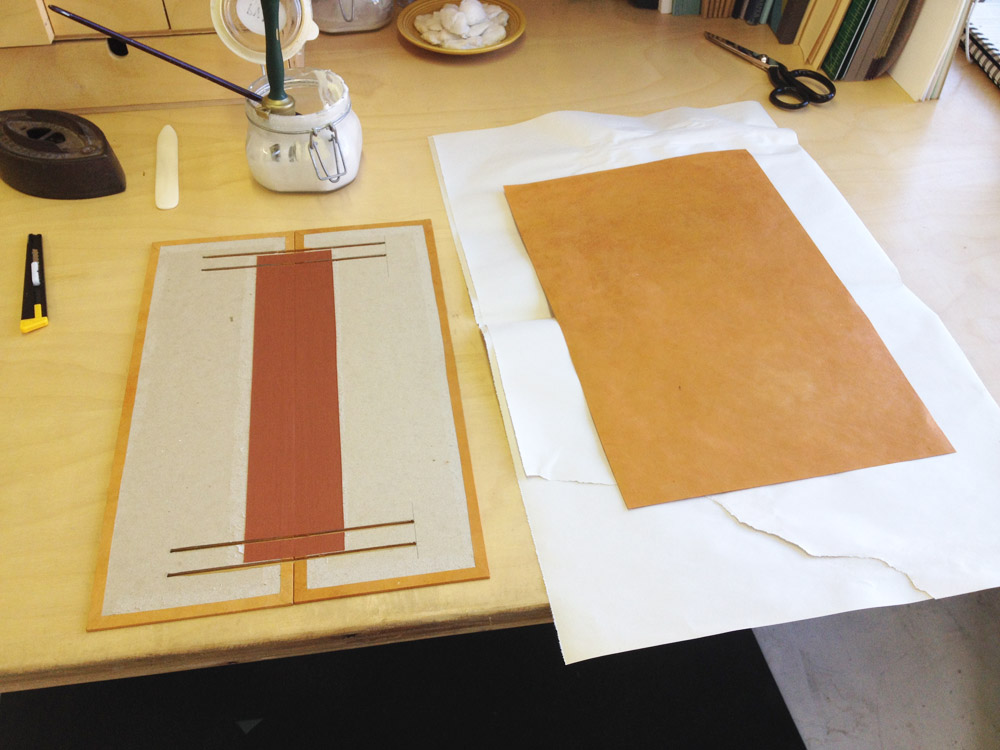
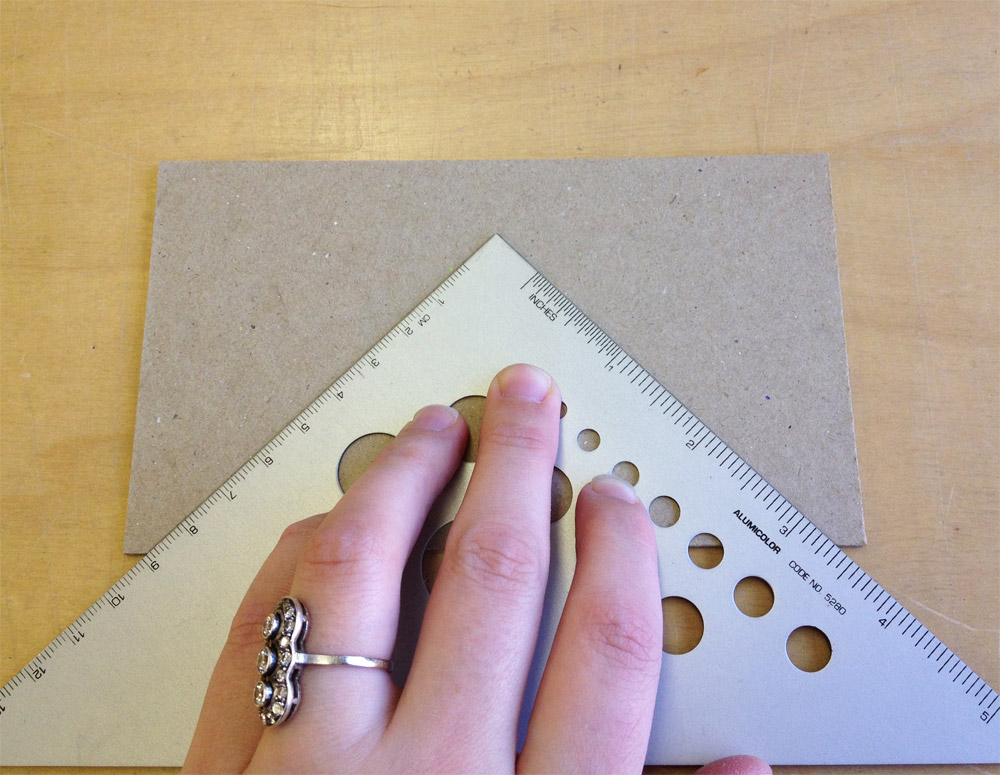
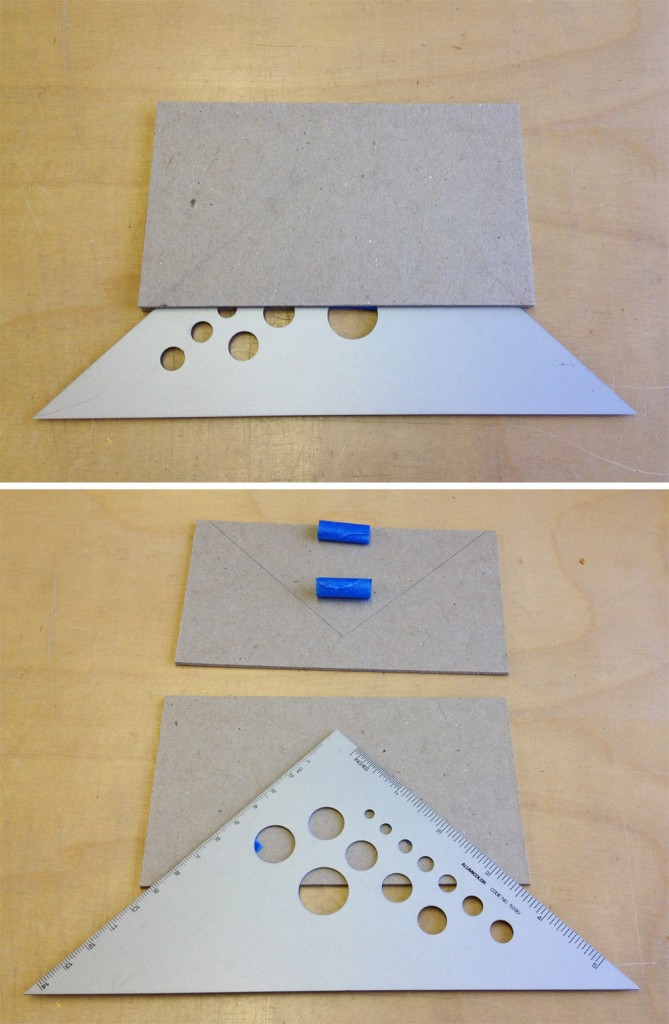
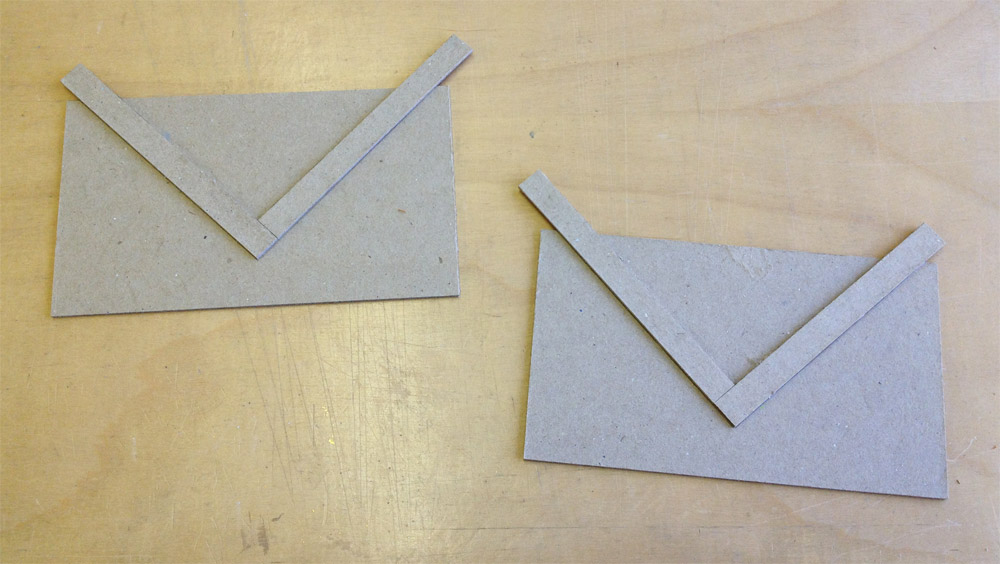
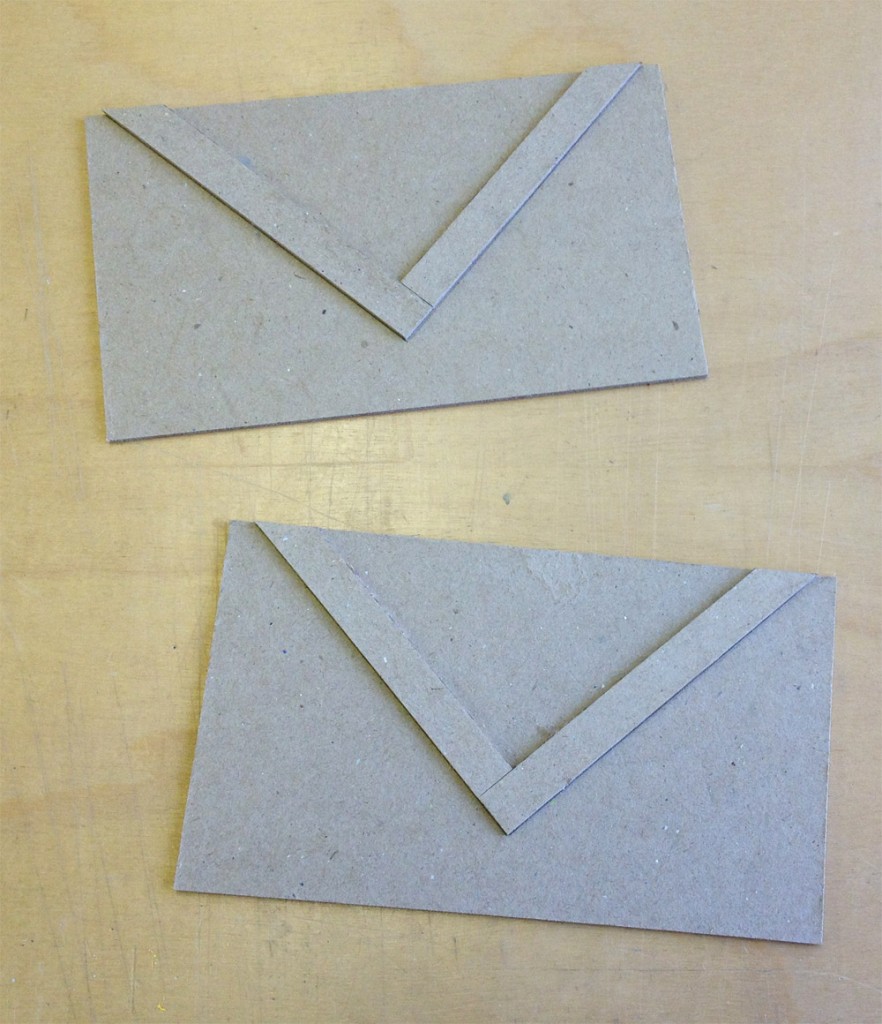
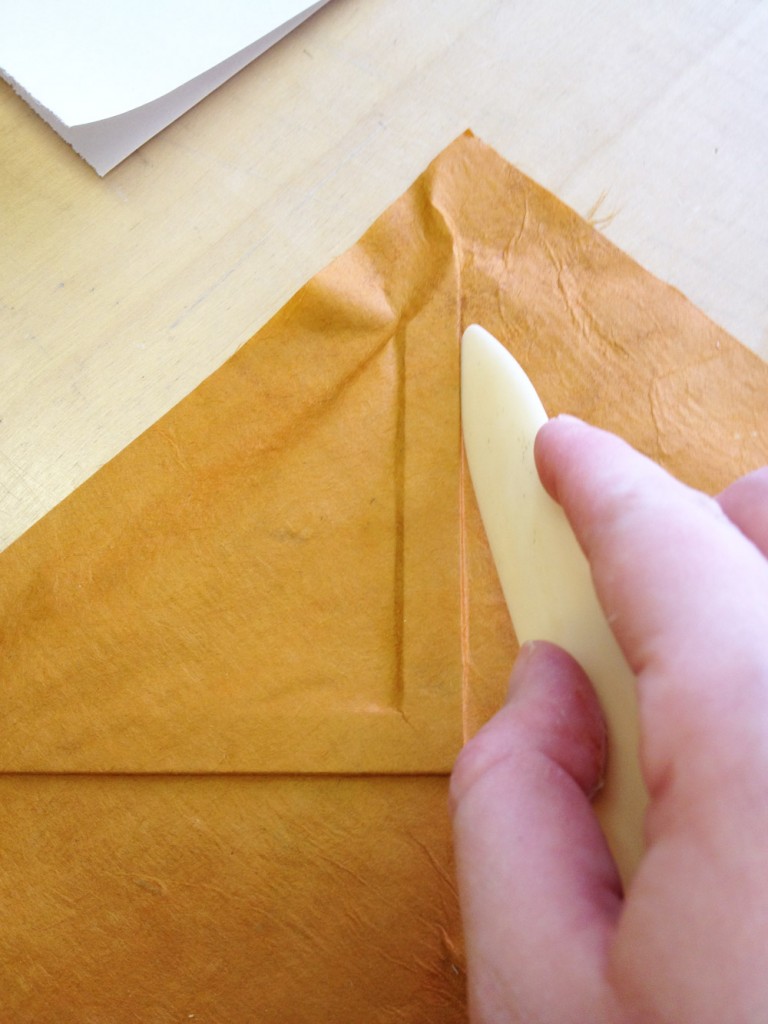
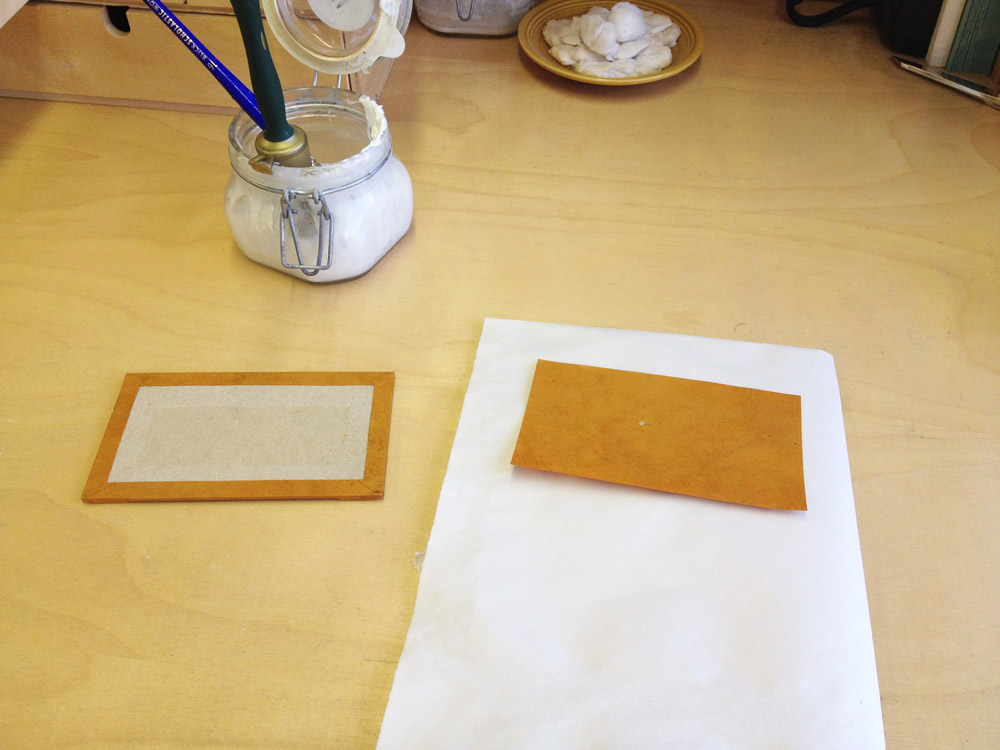
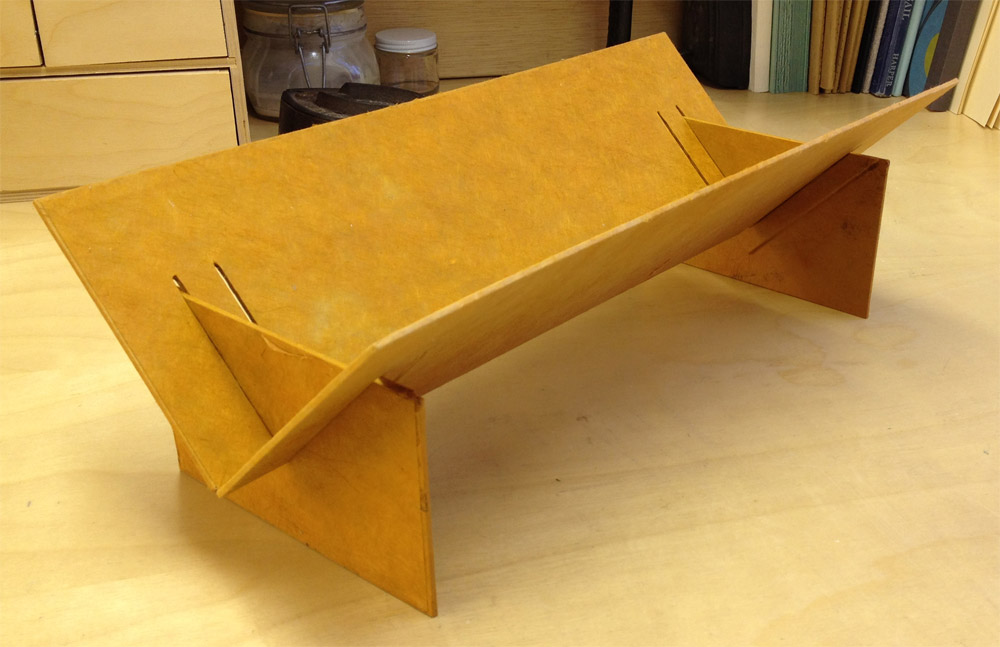

Thank you for this great tutorial. You’ve inspired me to want to make my own.
I’m inspired and motivated to make my own. Today! Your tutorial is very clear and detailed. Thanks for sharing this!!
For the center of the cradle, where you will be punching through the paper — is it cut away and open? I think it is from the directions, but I am a visual learner and
would love to see a picture showing the inside!
Hello Penny,
No the center of the cradle is covered by the Lokta paper and reinforced with a strip of bookcloth. Hope that helps.
Thanks for the terrific instructions! Mine is a bit more rustic than yours (ha!) but it looks great and I know it will be wonderfully useful as I teach my paper arts classes!
Nancy Akerly
Liberty Grove Paper Arts
I’m trying to figure out best dimensions and in the process wondered why you have both inner and outer slots?
Thanks for the tutorial. :)
The outer slot offers a flexibility in the size of text block that I can punch. If you are making one for yourself, an outer slot is optional. I mostly use the cradle with the legs at the inner slot, but every once in a while I need that extra bit of height.
So useful! I’ve been thinking about getting a cradle for some time now, what a fantastic tutorial! so easy to follow!
Thanks for the directions as I followed them and finished the cradle today (10/18/2020). Your efforts are still being appreciated.
Glad this tutorial was helpful!
Great instructions, thanks. I finally have my own punching jig!
Fantastic!